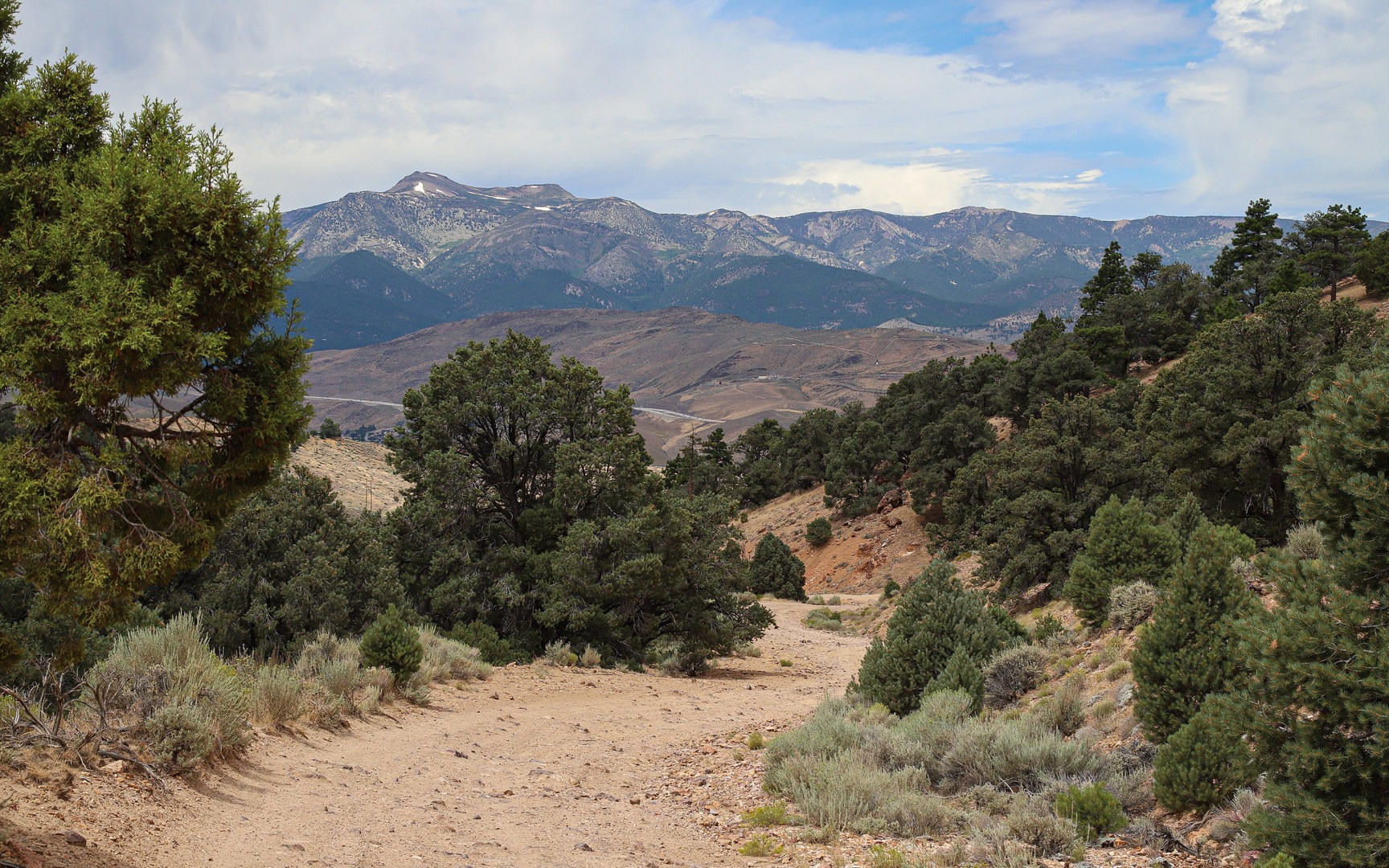You are here
The Toll Road hike follows the path of the old stage coach road between Reno and Virginia City. Completed in 1863, the road's steep slope provided a route to the transcontinental railroad and urban area in the city of Sparks without making coaches take the longer route to the south. Several toll booths lined the road, and its rugged route, which forced drivers to slow down in places, would make this road a popular spot for outlaws to rob coaches and their potential riches headed to or from the mines in Virginia City.
Eventually, Geiger Grade, a more gradual incline constructed for the railroad, would be paved and become the main route for vehicles. This change left the Toll Road and its more rugged path to wither.
These days, the Toll Road is rocky, slippery, and often washed out or covered in snow, a gravel road that sees occasional use from off-road vehicles, mountain bikers, hikers, and trail runners looking for a thigh-burning workout. Covering 1,400 feet of elevation gain, Toll Road gives hikers a chance to head into a canyon with a continual uphill that rises from Washoe Valley into the mountains and feels a world away from the development just a few miles down the road. For comparison, the Geiger Grade covers that same gain in over twice the distance.
The hike follows what is technically a road, but with numerous washouts, rutted tracks that prevent all but lifted four-wheel drive and off-road vehicles from attempting to drive it, hairpin turns that hug the mountainside and ensure late coverage in snow and mud following wet winters, and a lack of shade or any abundance of lush scenery, those heading out for this hike will feel far away from both Reno and Virginia City.
As you gain in elevation, several views open up looking across Washoe Valley and to the mountainous eastern edge of the Sierra across the way. Mount Rose and Slide Mountain remain prominent, and their iconic masses completely dwarf the freeway and new building construction going in at their base. The smell of pine wafts in the air above the ground, which becomes increasingly orange from its mineral richness as you approach the top.
At 3 miles in, the top may be the most anticlimactic part of the hike, with no real scenery or anything at the turnaround point and with only having reached the Virginia City Highlands, a rural housing community, rather than the town itself. If you keep a eye out, you may be able to see wild horses, which often gather near the plateau at the top of the hike. From this point, turn around and descend, with better views and less effort required in this direction.
Park at a wide dirt pullout in the neighborhood just below the point where Toll Road begins its climb. There are no amenities of any kind along this hike. Expect hot, shadeless summers, and muddy or snow-covered roads during and following winter.
Logistics + Planning
Current Weather: Powered by Dark Sky
























Comments
Sign In and share them.